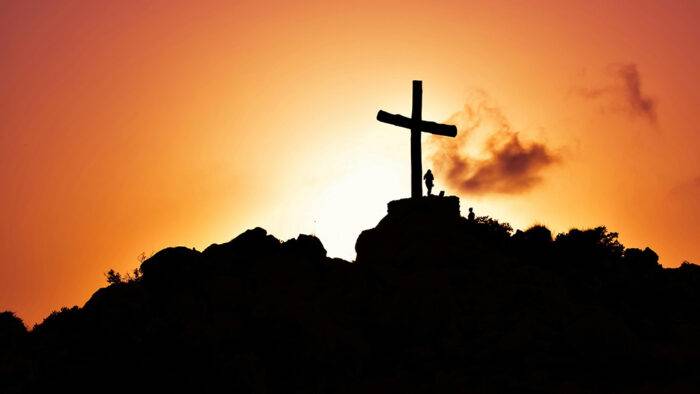How Many Resurrections are there in Scripture?
Easter weekend is upon us, and so we celebrate the most important part of Christianity—the fact that Jesus is alive! This is the essence of our hope as believers. Because of Christ’s resurrection we have hope of our own resurrection. But understanding the timing of future resurrections can be tricky. How many are there?

I saw an online discussion recently about how many resurrections there are in Scripture, and a question was asked about when OT believers are resurrected. I think it is a worthwhile discussion to have, and I think we can accurately observe four resurrections in Scripture. (This is of course assuming that the resurrection of Lazarus in John 11 and the saints in Matthew 27 are temporary and they die again). But, if you are interested, I have tried to compile a complete list of all the resurrections in the Bible.
The Foundation for ALL Resurrections: Christ
In 1 Corinthians 15:20 Paul calls Christ the “first fruits” of those who have fallen asleep. The concept of first fruits goes back to the Old Testament (cf. Lev 23:9-21). The first fruits were not intended to be viewed as something separate but as part of the whole (just chronologically first). It was a symbol of the fact that the entirety belonged to God.
This concept is applied to the resurrection in 1 Corinthians 15. Paul views the resurrection holistically. In other words, the resurrection of Christ and believers are viewed theologically together as one. They are theologically united through Christ. Christ is the first part of what is to come in future resurrection.
The Resurrection of the Church in 1 Corinthians 15:20-24
1 Corinthians 15:20-24 gives support for a pre-tribulation rapture/resurrection of the Church. Notice that Paul lays out the chronology of the resurrection of Christ and believers:
20 But now Christ has been raised from the dead, the first fruits of those who are asleep. 21 For since by a man came death, by a man also came the resurrection of the dead. 22 For as in Adam all die, so also in Christ all will be made alive. 23 But each in his own order: Christ the first fruits, after that those who are Christ’s at His coming, 24 then comes the end, when He hands over the kingdom to the God and Father, when He has abolished all rule and all authority and power (1 Cor 15:20-24).
Paul orders this chronology into stages:
1. Christ is raised (v. 20, 23)
then…
2. Believers are raised (v. 23)
then…
3. The end comes (v. 24)
It is important to note that the end is differentiated from the believer’s resurrection. Paul uses very specific chronological words giving a sequence: Christ, then believers, then the end comes.
Paul is writing to the church and is speaking of the resurrection of the church which happens before the end. This same event is described in 1 Thessalonians 4:13-18 (although there the chronology is not given), written by Paul only 4-5 years earlier. In 1 Thessalonians 4 Paul emphasizes the comfort which faces the church before the end—they will be with Jesus while the unbelievers face judgment (cf. 1 Thess 5:1-11).
Sometimes people claim that Jesus only says there will be one resurrection: some to death, some to life (John 5:28-29). However, we want to be faithful with the intent of Jesus’ words. His purpose in John 5:28-29 is not to provide a chronology for the resurrection. The purpose is to emphasize that the Son has been given authority over all people (cf. John 5:22), which will include their final judgment post-resurrection.
Now, it is true that there are two resurrection events mentioned in John 5, some to life and some to death. But that does not mean that they happen at the same time. Remember, the theology of resurrection indicates that resurrection is a holistic concept which can be chronologically divided (as explained in 1 Cor 15).
Brief Outline of Future Resurrections in Scripture
If we examine the complete testimony of Scripture, we can outline a rough chronology and sequence of biblical resurrection.
1. Resurrection of Christ (First fruits, 1 Cor 15:20, 23)
2. Resurrection of Believers in the Church (Rapture, 1 Thess 4:13-18; 1 Cor 15:23)
[7 Year Tribulation] (Daniel 9:27; Revelation 6-19)
3. Resurrection of OT Saints and Martyrs (Revelation 20:4)
[1,000 Year Reign of Christ] (Revelation 20:4)
4. Resurrection of the Wicked (Revelation 20:5)
Tracing the biblical chronology it seems there are four resurrection events.
Why Doesn’t Paul Mention the Other Resurrections in 1 Cor 15?
Why would Paul only include the first two resurrections (Christ and the church) if there were others as well? The answer to that is in the reason he is writing 1 Corinthians 15 to begin with (1 Cor 15:12). Some of the Corinthians denied the resurrection of the dead, and Paul’s entire argument in 1 Corinthians 15 is laid out to show the Corinthians that their future is dependent upon Christ’s resurrection. Therefore, his concern is to demonstrate the church links with Christ. He is not attempting to provide a full chronology of resurrection theology. Rather, he is specifically addressing the relationship of Christ’s resurrection to the Corinthians’ own resurrection.
As we celebrate Christ’s resurrection this Sunday, remember that without His resurrection you have no hope of resurrection. Praise the Lord that death is not the end! Death, where is your sting? Death, where is your victory?
2 Comments
Karole Fedrick
Hi, Peter. Won’t there be a resurrection for Millennium believers since Isaiah 65:20 indicates people will die during that period? Those who make it through alive will be translated, right?
Thanks for your help.
YSIC
Karole
Peter Goeman
I believe that is correct, yes.